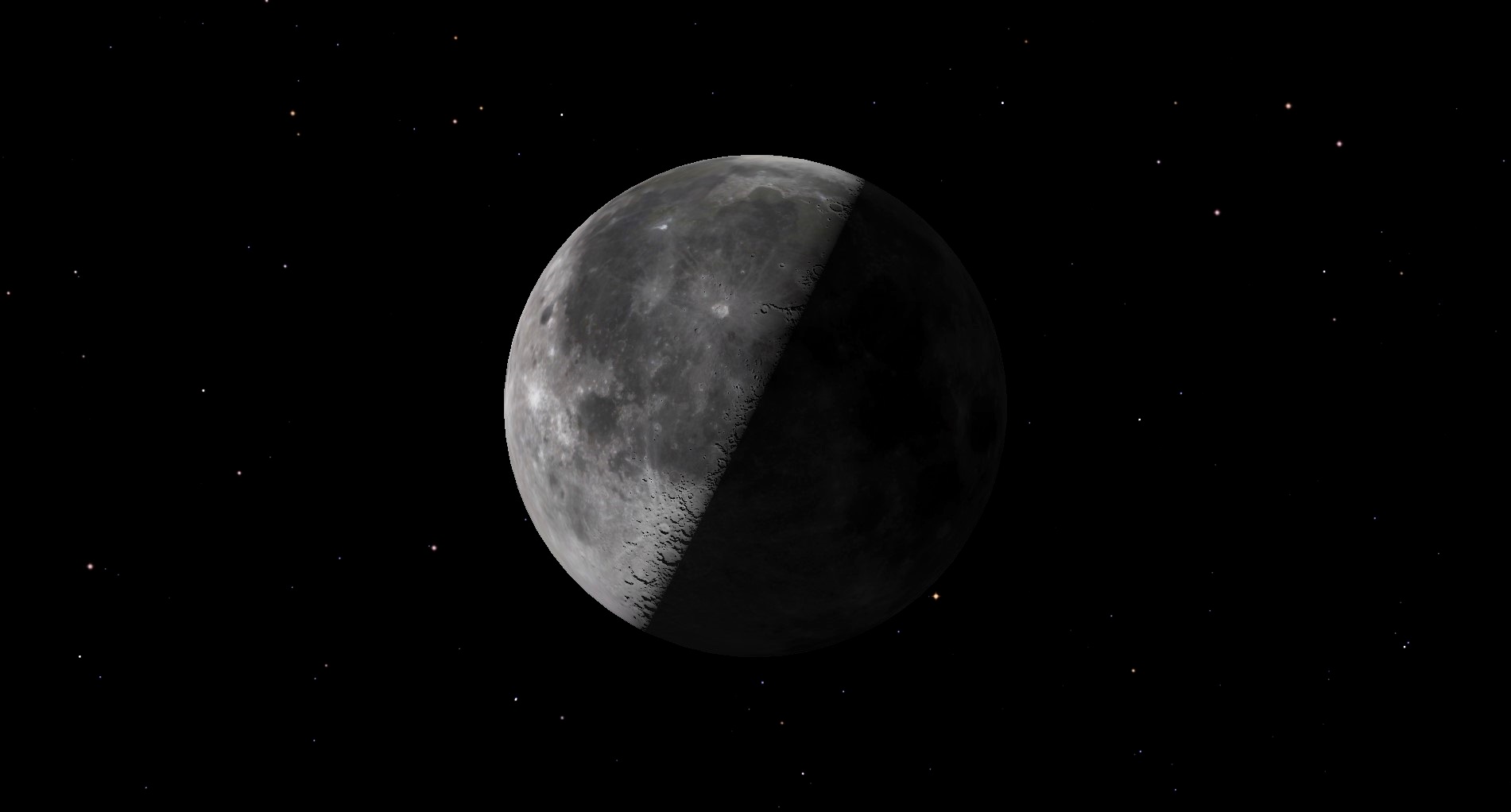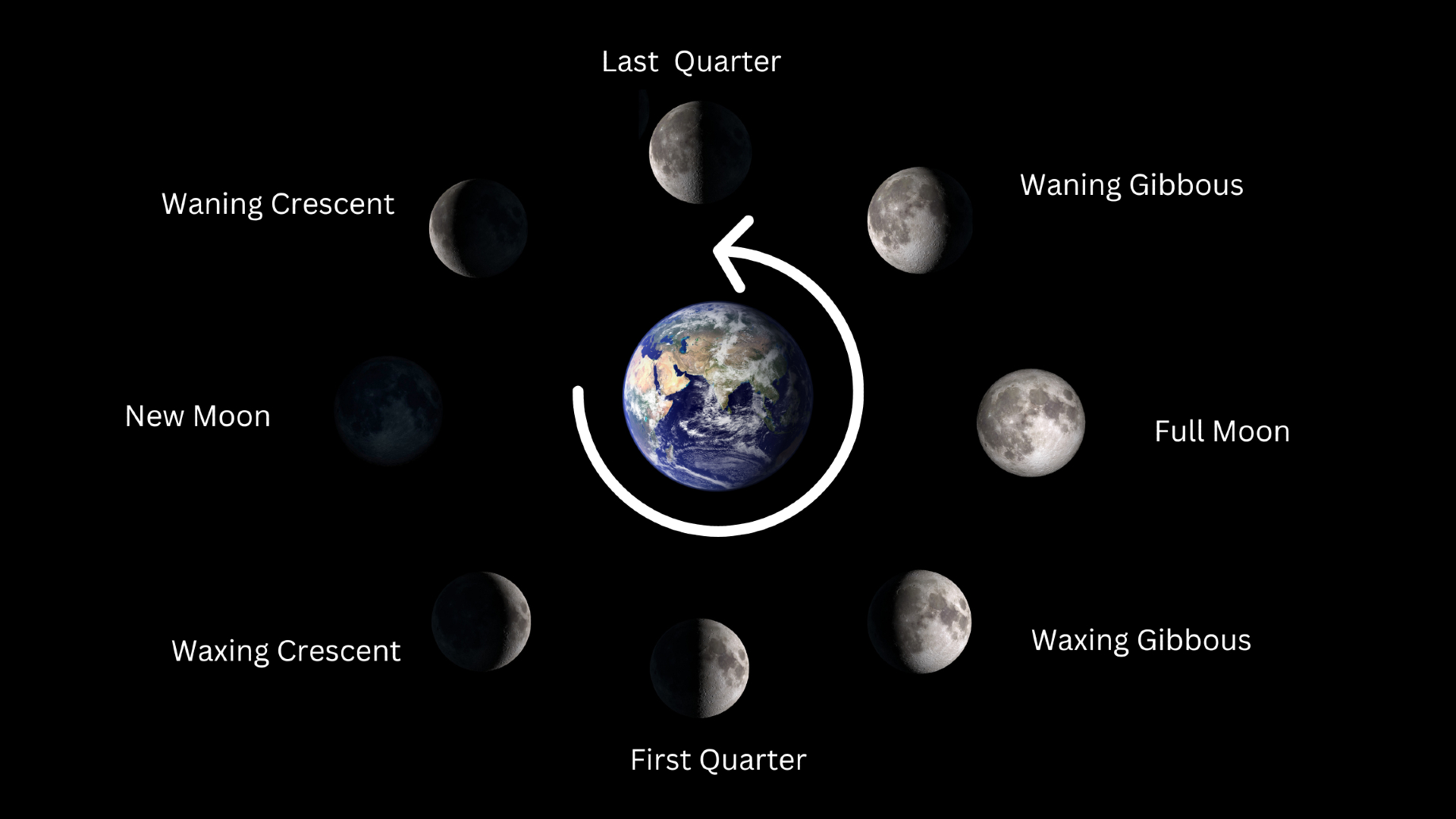See the half-lit last quarter moon tonight (Nov. 16)
The moon will appear half illuminated in the evening sky on Wednesday heading for the new moon on Nov. 23.

On Wednesday, Nov. 16, 2022, the moon will appear half illuminated in the evening sky as it moves into its final quarter — also called the third quarter phase. The final quarter moon will rise during the middle of the night and will be prominent in the sky before the dawn hours.
From a position in New York City, the last quarter moon will become visible at an altitude of around 7 degrees above the eastern horizon at around 23:44 EST (0544 GMT on Nov. 17), according to In the Sky.
The half-illuminated moon will reach its highest point in the sky at around 06:05 EST (1105 GMT) when it will be 67 degrees over the southern horizon. Shortly after this at 06:23 EST (1123 GMT) and while it is still in the same position, the final quarter moon will be lost in the dawn twilight.
Related: Night sky, November 2022: What you can see tonight
The fact that the moon appears half-illuminated by the sun during the final quarter phase may initially seem confusing, but the "quarter" name actually relates to the fact this phase marks the fact the moon has completed ¾ of its 29.5-day cycle.
The final quarter falls exactly between the fully illuminated full moon phase and the fully dark new moon phase. The last full moon, November's Beaver Moon, fell on Nov. 8 and the next new moon happens on Nov. 23, marking the start of a new lunar cycle.
In the period between the full moon and the new moon, the moon rises later and later each day and is thus visible for shorter periods each subsequent night. As this is progressing the illuminated side of the moon is also receding across its face with progressively less lit by the sun.
Breaking space news, the latest updates on rocket launches, skywatching events and more!
The situation is reversed after the new moon. During the following period, the moon rises earlier and earlier and becomes visible or longer and longer as its illuminated face advances leading to the next full moon.
The midpoint between the new moon and the full moon is called the first quarter and again the moon's face is half-illuminated. Which side of the moon an observer from Earth sees illuminated during both the first quarter and third quarter phases depends on where on the globe they are positioned.
The next full moon when the moon is fully illuminated again and visible throughout the night occurs on Wed. Dec.7. This full moon takes on the apt title the "Cold Moon."
If you're looking to take the best photos of the moon that you can, our how to photograph the moon guide is full of expert tips on techniques, times and tools to help you start taking the most impressive lunar photos you can. Our best cameras for astrophotography and best lenses for astrophotography can also help you take the best moon images you can, no matter your skill level.
Fancy taking a more in-depth moonlit tour of our rocky companion? Our ultimate guide to observing the moon will help you plan your next skywatching venture whether it be exploring the lunar seas, mountainous terrain, or the many craters that blanket the landscape. You can also see where astronauts, rovers and landers have ventured with our Apollo landing sites observing guide.
Editor's Note: If you snap the third-quarter moon and would like to share it with Space.com's readers, send your photo(s), comments, and your name and location to spacephotos@space.com.
Follow us on Twitter @Spacedotcom or on Facebook.

Robert Lea is a science journalist in the U.K. whose articles have been published in Physics World, New Scientist, Astronomy Magazine, All About Space, Newsweek and ZME Science. He also writes about science communication for Elsevier and the European Journal of Physics. Rob holds a bachelor of science degree in physics and astronomy from the U.K.’s Open University. Follow him on Twitter @sciencef1rst.

